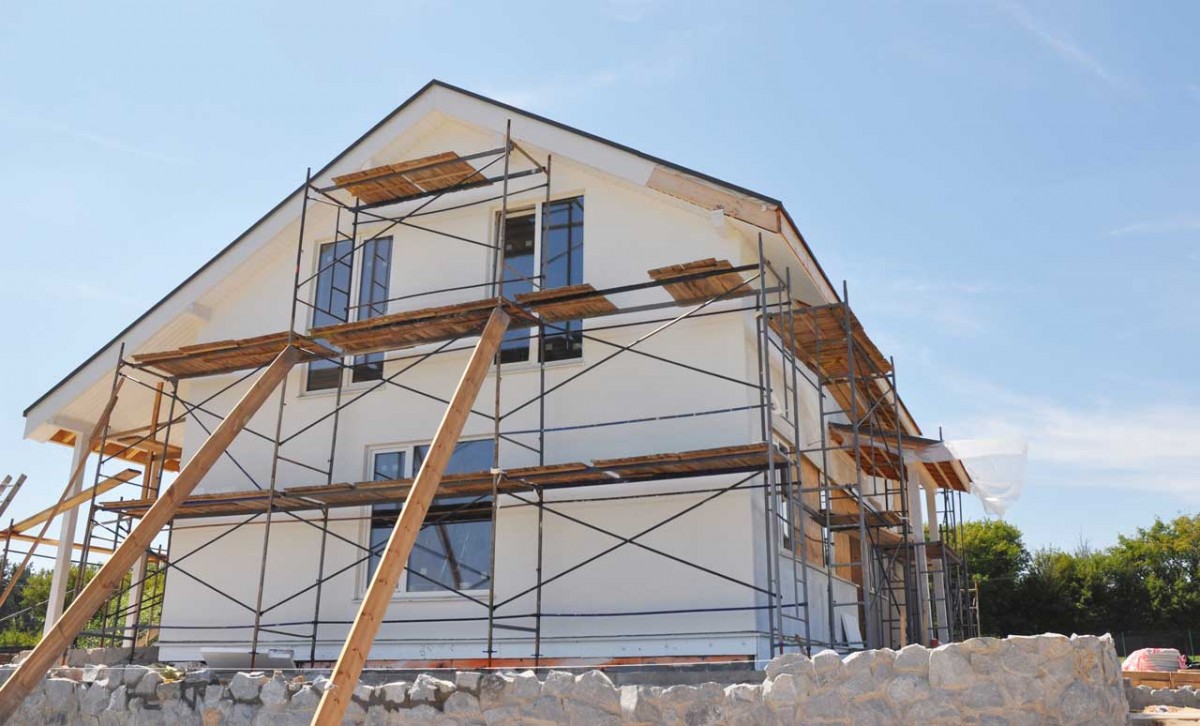Clinker, plaster, wood, right? Which facade is the best?
A plastered facade has a very long service life and is cheap
The plastered facade is very widespread in Germany and the classic all-rounder in every federal state. The plaster, which is often sold in sacks, contains building lime, cement or gypsum and is stabilized with sand, plastic particles or marble gravel, depending on the structure and type. In addition, ingredients are included that influence the flow and adhesion properties and accelerate drying. Different types of plaster are used for the facades. These are:
– scratch plaster
– rubbing plaster
– Fine plaster
– Roughcast
Unlike facade cladding with panels, plastered facades have to be repainted after about 20 to 30 years. This is due to pollution from the environment or, in the case of moisture, from algae growth. Depending on the type of material and the plaster system, the costs can vary greatly and range from 35 to 70 euros per square meter.
Wooden facades are also very durable and resistant with untreated wood
Not only wooden houses can have a wooden facade. Modern assembly options allow the use of wood on almost all facades. Mixed forms with plaster and wood are also possible. A distinction is made in the assembly options with wood, the lap siding or the bottom cover siding. Another and very common type is the tongue and groove assembly. Tongue and groove facades are very popular with so-called Swedish houses. The assumption of builders that wooden facades only have a limited lifespan is unfounded. If the facade is professionally installed and properly cared for, even untreated wood is very durable. The construction only has to ensure that water can always drain well. Since the raw material wood has now become very expensive, wooden facades are not particularly cheap either. Square meter prices of up to 100 euros are possible depending on the type of structure and the type of wood used.
The clinker brick facades are complex and often very expensive
Clinker facades are very popular and give a house a very personal character. They have a classic brick look and can be variably combined with plaster or wood. When clinker bricks are installed, the actual skin of the building is clad with a curtain and rear-ventilated facade. This means that the load-bearing wall and the facade are not connected. Good ventilation removes moisture that has penetrated and prevents the formation of mold. In older buildings, the gap is very often filled with insulating material to achieve a better heat balance. Depending on the manufacturer, the clinker facade is one of the slightly more expensive facade variants. Maintenance and repairs are also very expensive. With professional execution, a service life of up to 100 years is possible.
